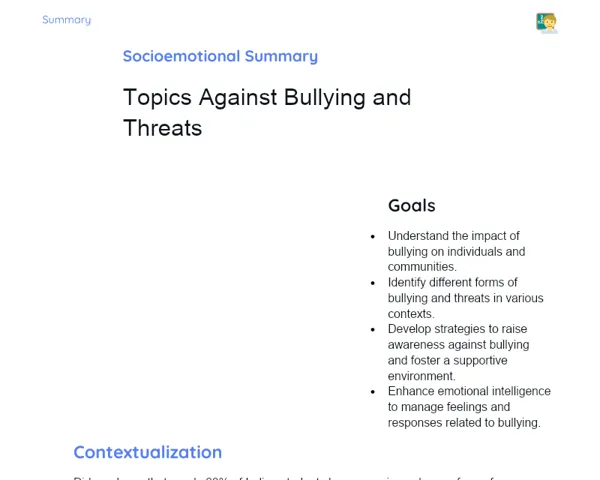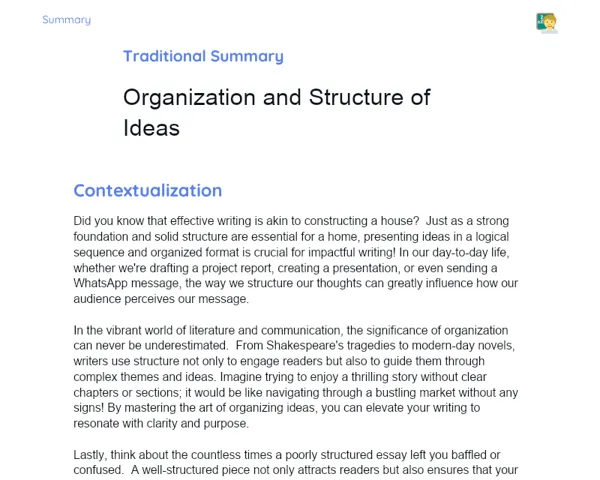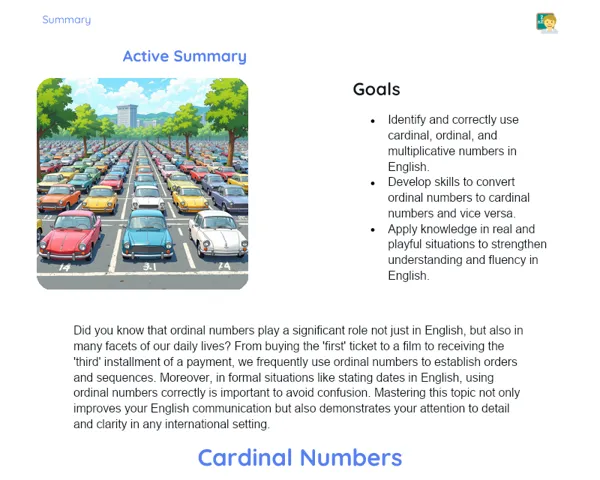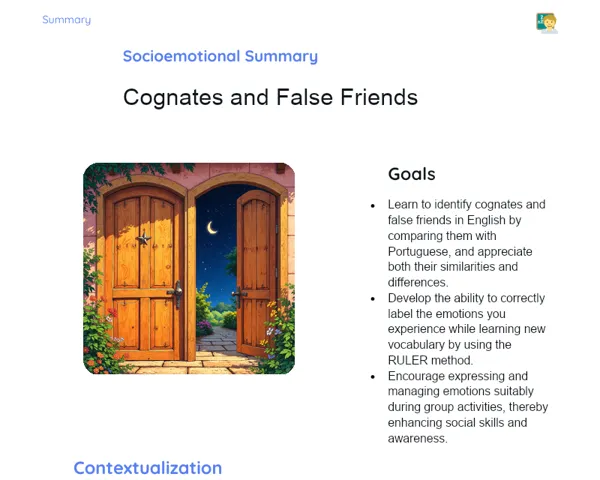Objectives
1. 🎯 Understand the role and application of connectors in forming sentences and texts in English.
2. 🎯 Identify various connectors in different texts, enhancing reading comprehension.
3. 🎯 Develop skills to use connectors strategically and effectively, improving the cohesion and clarity of texts.
Contextualization
Did you know that connectors are like the pillars of a bridge in the English language, linking thoughts so we can smoothly transition from one idea to another without stumbling into confusion? 🌁🔗 They are crucial for the fluency and coherence of texts and conversations, helping us express not just logical connections but also emotional and temporal subtleties. Imagine narrating a story without using 'and', 'but', or 'because'... It would be like trying to build a bridge without any support! In this journey, we'll delve into how these seemingly simple elements are vital for effective communication in English, equipping you to be a pro at tying together ideas and emotions.
Important Topics
Addition Connectors
Addition connectors, such as 'and' and 'besides', are used to add information or ideas that align with what has already been presented. They are fundamental for enriching our communication, making the text structure more engaging. For instance, in a conversation, saying 'I like ice cream, and my brother likes cake' clearly conveys new information.
-
'And' is the most common and straightforward connector for addition in English.
-
'Besides' is used to introduce complementary information that isn't crucial to the main idea.
-
Choosing the right addition connector can subtly shift the meaning or emphasis of a sentence, highlighting the need for careful selection in effective communication.
Contrast Connectors
Connectors like 'but', 'however', and 'although' are essential for indicating contrast or opposition between ideas. They help balance different viewpoints, which is vital for structuring more nuanced texts. For example, 'I love pizza, but my sister prefers pasta' presents a contrasting idea while keeping the conversation lively.
-
'But' is the simplest connector for direct contrasts in English.
-
'However' is more formal and often used at the start of a sentence to signal a significant shift or contrast.
-
Using contrast connectors can add depth and complexity to a text, allowing for a discussion of differing perspectives or both positive and negative aspects of a topic.
Cause and Effect Connectors
Connectors like 'because', 'since', and 'as a result' are used to show cause-and-effect relationships within parts of a text. They are essential for clarity and logical reasoning. For example, in the sentence 'She couldn't sleep because it was too noisy outside', 'because' clarifies the reason something occurred, crucial for effective communication.
-
'Because' is the most common connector for indicating cause in English.
-
'Since' is a bit more formal, while 'as a result' clearly ties an action to its consequence.
-
The ability to use cause-and-effect connectors correctly is key for academic and professional writing, as it allows clear explanation of arguments and ideas.
Key Terms
-
Connectors: Words or phrases that establish logical connections between ideas in a text or conversation.
-
Textual Cohesion: The quality of a text that allows its parts to connect logically, enabling reading and understanding.
-
Fluency: The ability to speak or write clearly and smoothly, without excessive pauses, enhanced by the proper use of connectors.
For Reflection
-
How can using connectors enhance the clarity and effectiveness of your everyday communication in English?
-
Why is it important to select the right connector depending on the speaking or writing situation?
-
How can practicing the identification and usage of connectors enhance your English listening comprehension skills?
Important Conclusions
-
We explored the crucial role of connectors in the English language, learning how they serve as 'bridges' that connect our ideas with clarity and logic.
-
We discussed addition, contrast, and cause-and-effect connectors, and how each plays a significant role in effectively conveying thoughts and arguments.
-
These skills are applicable not just in academic writing but also in daily conversations, making our discussions more coherent and logical.
To Exercise Knowledge
- Create a connector journal: For one week, note down all the connectors you come across in English, whether in speaking or writing. Try to use these connectors in short stories or summaries you create. 2. Debate with family or friends: Choose a topic, and use connectors to present your arguments clearly and persuasively. Seek their feedback on your use of connectors. 3. Listening challenge: Watch an English movie or series and identify the connectors used by the characters. Jot down interesting examples and discuss their usage with a colleague or family member.
Challenge
🚀 Master Connector Challenge: Pick a topic that interests you and write a short essay or video script using at least five different types of connectors. Aim to include addition, contrast, and cause-and-effect connectors. Share your work with the class or on an online forum to see who can spot all the connectors used!
Study Tips
-
Leverage language apps that provide conversation practice to explore using connectors in simulated dialogues.
-
Regularly revisit the different types of connectors discussed, and practice incorporating them naturally in your writing and speaking.
-
Watch TED Talks or English podcasts, focusing on how speakers use connectors to understand new ways of expression and argumentation.



